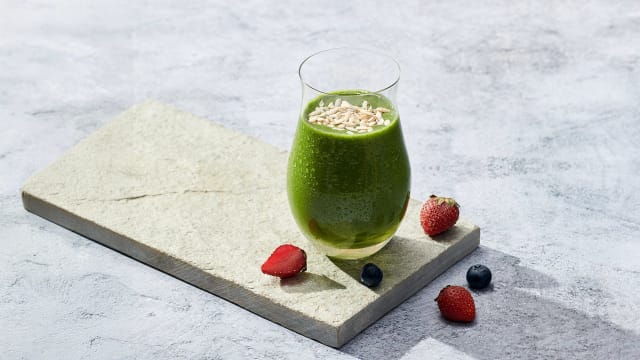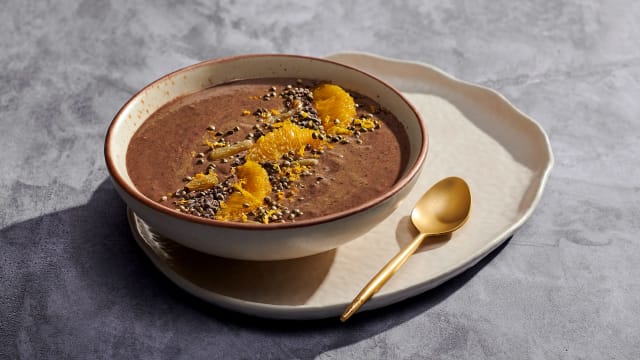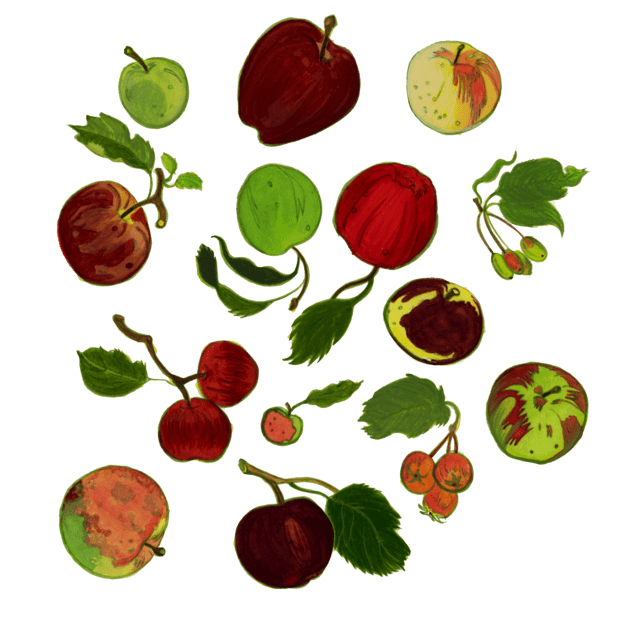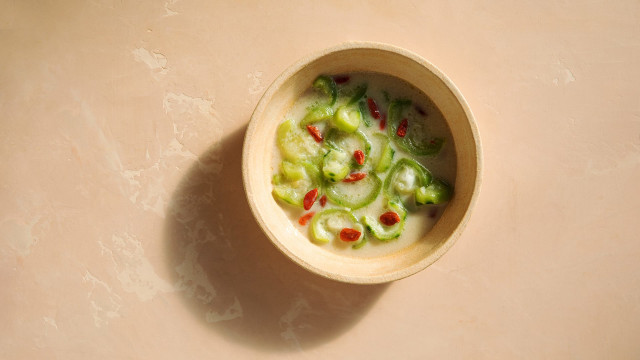
Lauki Tonic

Lauki Tonic
Description
This lauki (bottle gourd) smoothie is a delicious blend of hydrating lauki, sweet apples, spicy ginger, and refreshing mint. Packed with fiber and antioxidants from carrots and beets, and omega-3s from chia seeds, it supports digestion, hydration, and overall wellbeing. Optional pomegranate arils and lime zest add a tangy, nutrient-packed finish.
NOTE
Cut and freeze your fruits and veggies overnight for thicker, quicker-to-make smoothies.
Ingredients
2 to 4 smoothies MAKES
For the Tonic
- 1 (250 g) small or medium lauki (bottle gourd), washed and roughly chopped with the skin
- 2 (350 g) apples or pears, chopped and seeds removed
- 1 tsp chia seeds
- 1-inch-long piece of ginger, peeled
- A fistful of mint leaves
- 1 (20 ml) Juice of 1 lime
- 1 to 2 dates or 1 tsp jaggery to sweeten (optional)
- 2 cups (500 ml) water
- ¼ cup peeled and chopped carrot (optional)
- ¼ cup peeled and chopped beets (optional)
For the Garnish
- Pomegranate arils
- Lime zest
- Mint leaves
Directions
-
Step 1
Blitz all the ingredients together in a high-speed blender, adding water, until fully pulverized. If you didn’t pre-freeze your fruit and vegetables, you can add a couple of ice cubes while blending to get a fluffier texture and ensure your blender doesn’t get too hot. -
Step 2
If the smoothie is too fibrous for your taste, strain it out with a wide sieve so that some of the smaller, more tender fibers remain. You can add some of the filtered-out fiber pulp back into the smoothie and mix well. Remember that many smoothies lack nutritional heft because they remove the fiber. -
Step 3
Pour the smoothie into large glasses or bowls and serve chilled, with ice if you like. Garnish with pomegranate, lime zest, and mint leaves. Take a whiff of the mint before adding it! The aroma is invigorating, and some studies suggest that it may help with increasing alertness and decreasing fatigue.
Explore Recipe Ingredients
About the author
More by Mariam Begg

Avo-Berry Fruit & Greens Smoothie
How do you ensure that you’re not just packing a smoothie with fruit sugar? Choose fruits with high amounts of antioxidants and use the whole fruit. Add in seeds or nuts to boost the fiber, slow down digestion, and avoid spiking sugar levels. And use greens, like lettuce, for their vitamin and mineral content, as well as to add more fiber.

Cacao Hemp Smoothie Bowl
With its chocolatey flavor and creamy texture, this is a great “breakthrough” recipe for people who are reluctant to try smoothies or raw foods

Chai Chocolate Double-Layer Fudge
This vegan chocolate recipe, spiced with chai masala, is a delicious, grown-up dessert.






